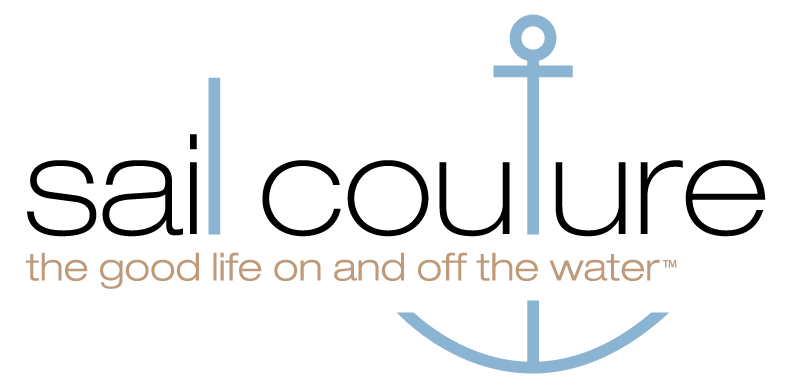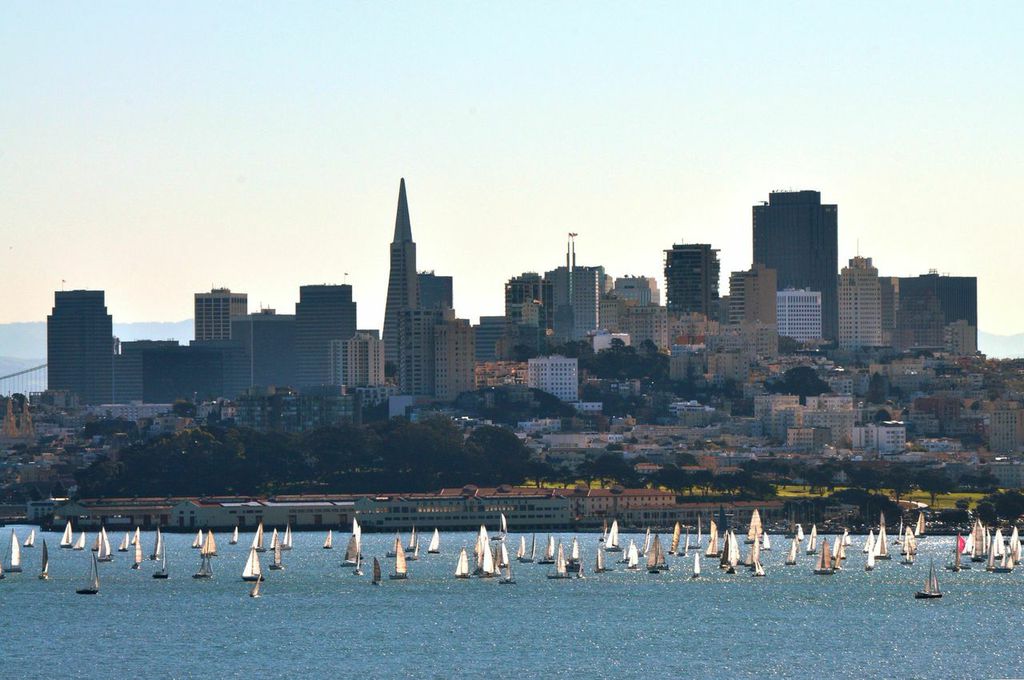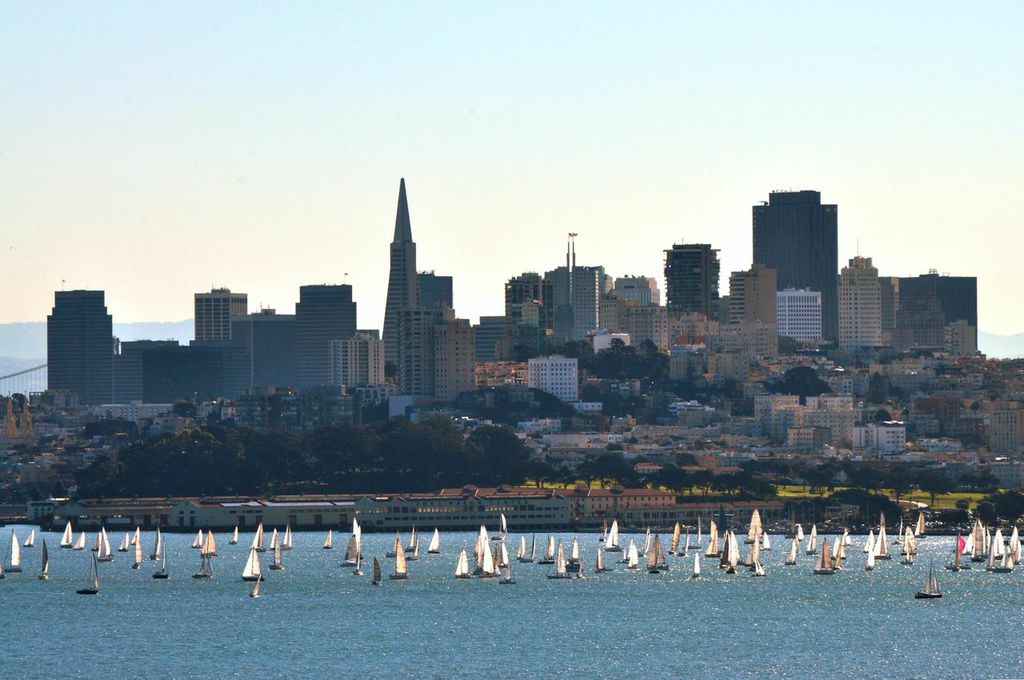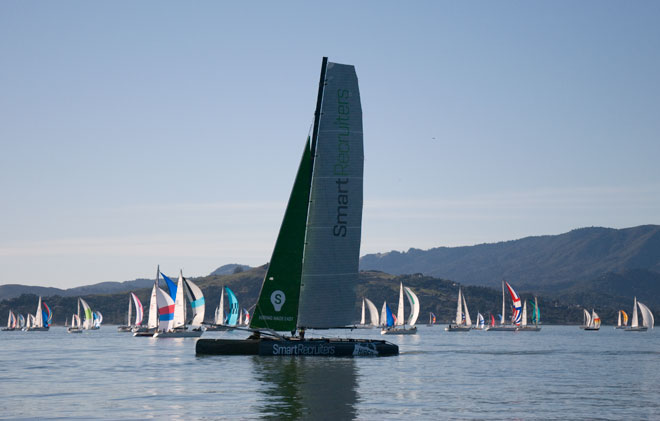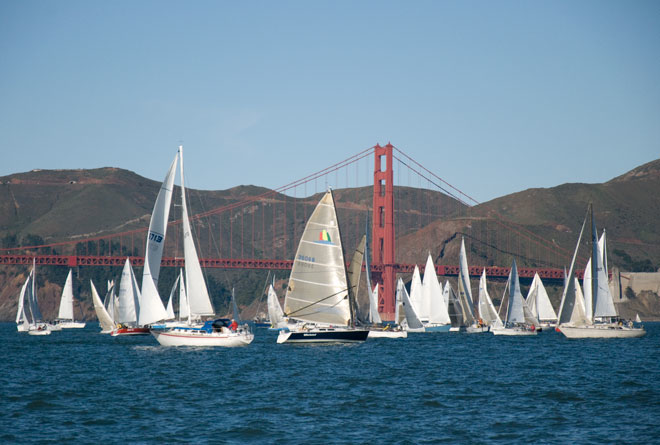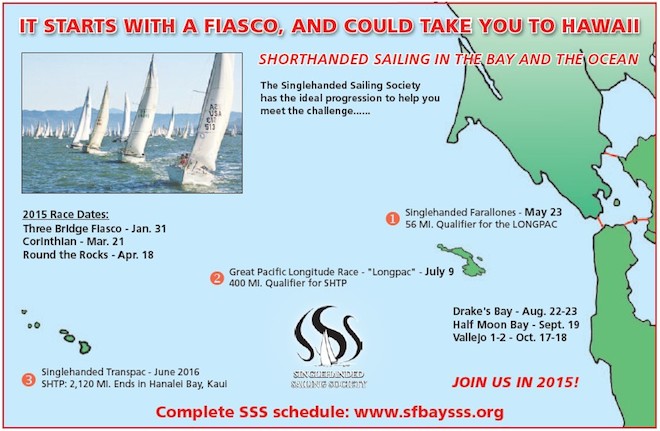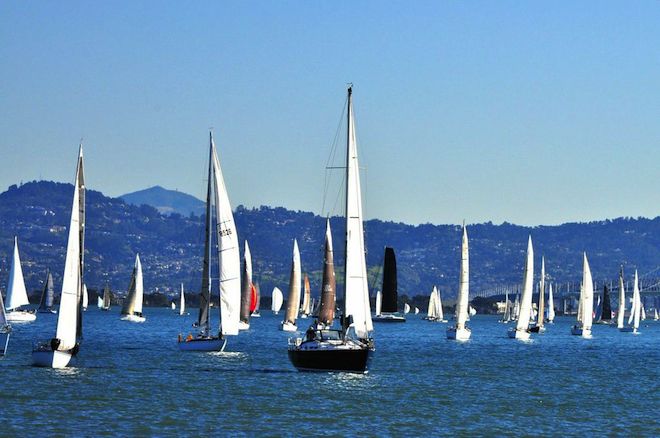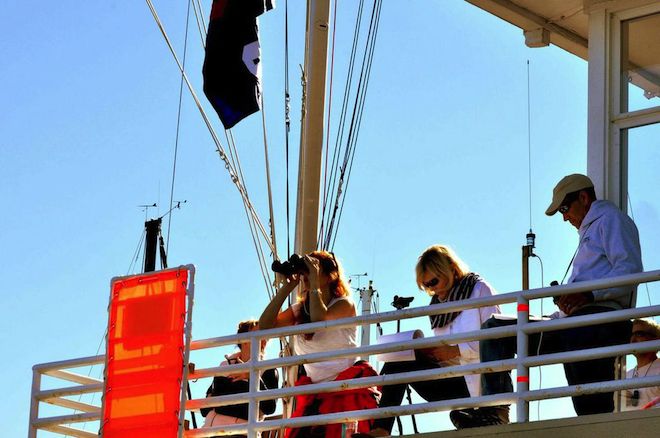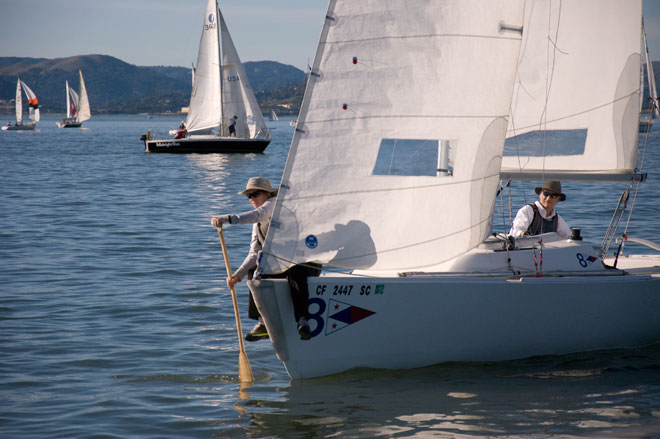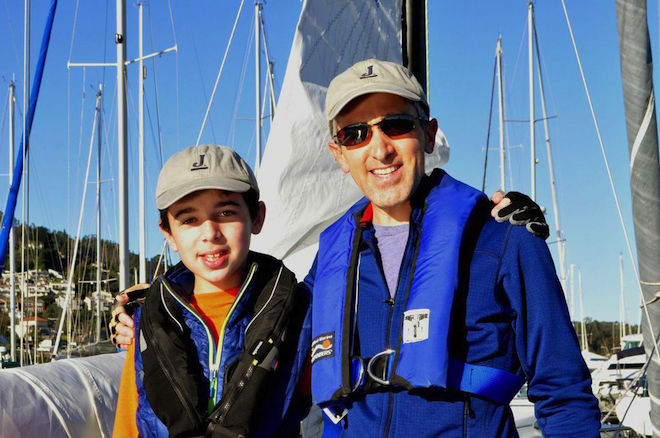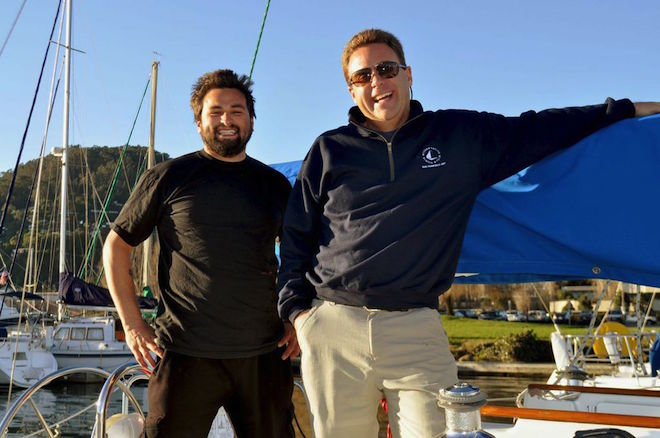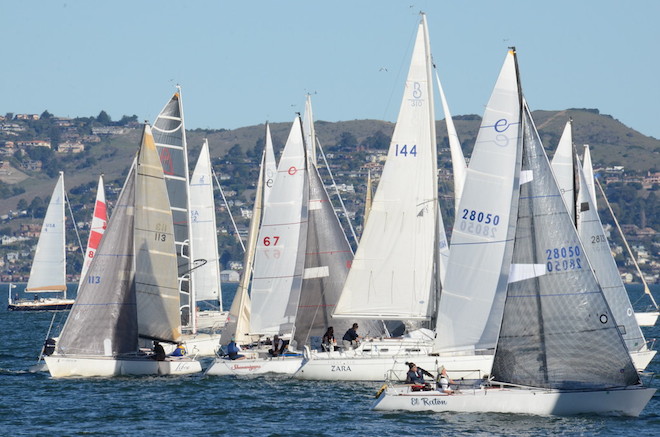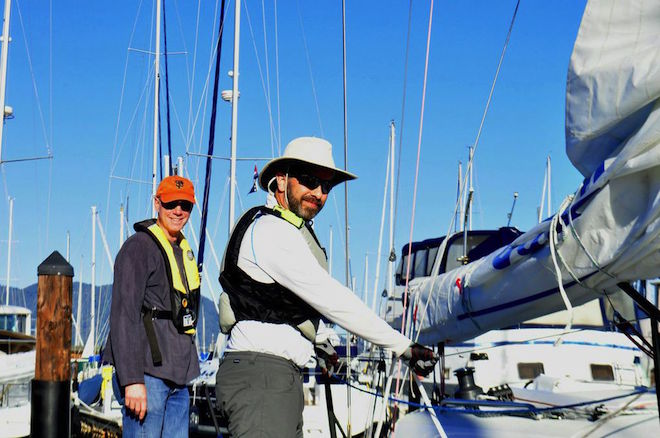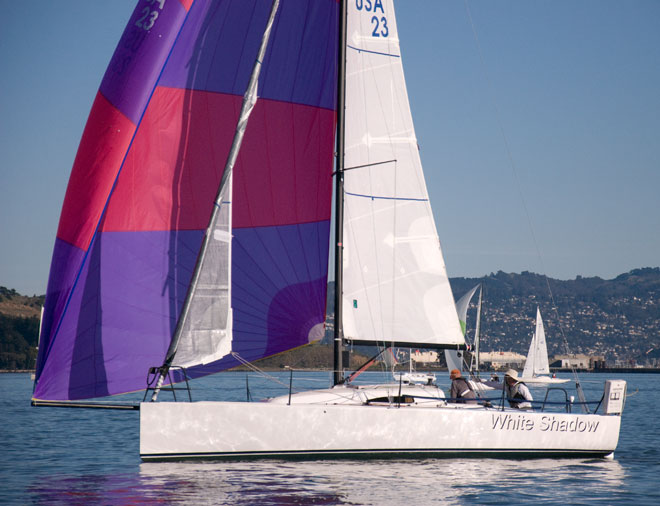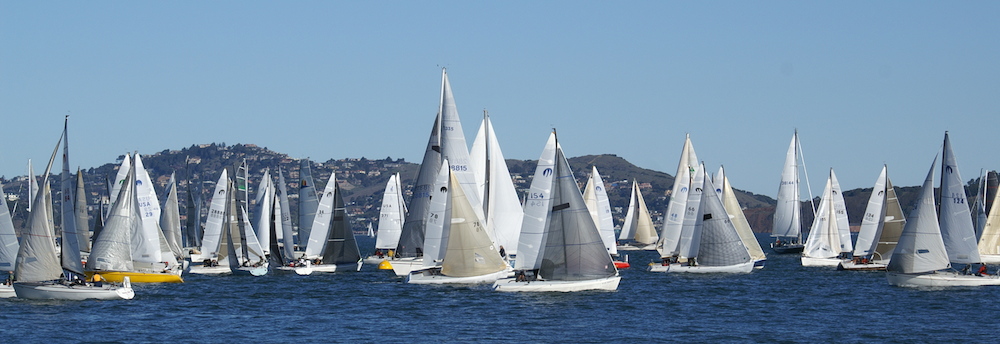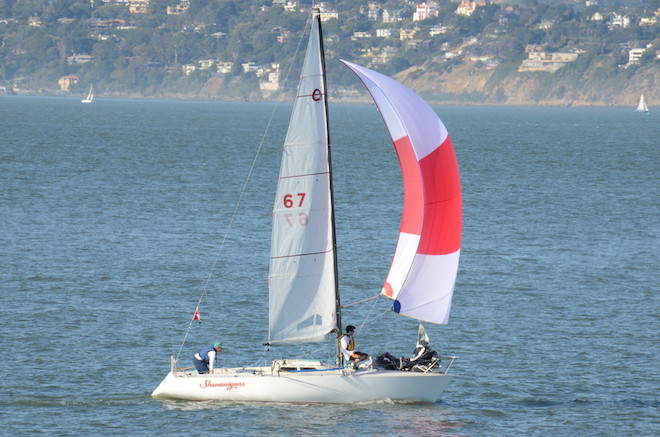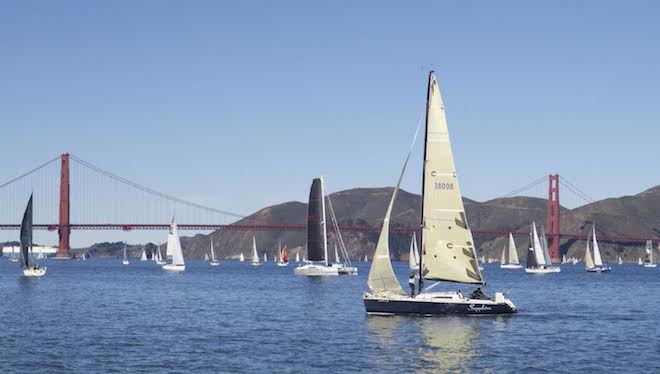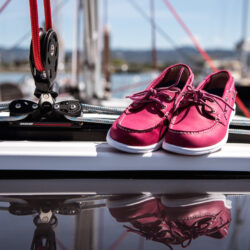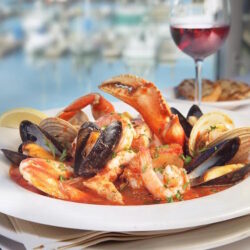500 racers. 365 sailboats. Three bridges. One bay. Welcome to the Three Bridge Fiasco.
For more than 30 years the Singlehanded Sailing Society has been organizing the race that flings sailors to the far reaches of the San Francisco Bay.
the san francisco skyline makes a dramatic backdrop for the three bridge fiasco fleet, photo: ©2015 kira maixner
a sea of spinnakers behind the smart recruiters extreme 40, photo: ©2015 www.norcalsailing.com
an iconic bridge of the three bridge fiasco, photo: ©2015 www.norcalsailing.com
The course is defined by the Golden Gate, Richmond, and Bay Bridges, and racers must pass by or sail under them in order to round each mark and head back to the finish line. Over the years it has grown from a modest gathering to the monster it is today, earning the title as the largest single- and double-handed race in the United States.
courtesy singlehanded sailing society
Allen Copper, Singlehanded Sailing Society Race Chair, has been sailing since 1981, singlehanded since 2000. He’s raced in the Three Bridge Fiasco at least ten times, blowing out his sail one year and winning first place in his class another.
there is so set course for the three bridge fiasco, photo: ©2015 sergei zavarin/ultimate yachtshots
There’s no set course for the Three Bridge Fiasco, only three marks (Blackaller, Treasure Island, and Red Rock) and a finish line adding a certain type of challenge to the event.
“It’s not about going around buoys. It’s about anticipating the currents and coming up with a strategy,” advised Copper, who has seen racers finish a mere four hours after starting — or not at all. As for organizing the event, it’s not so simple.
“You need to get a large enough race committee, get the sailing instructions right. If you miss the start, then you’re stuck,” he said.
Of course, he was right. This year there were 123 classes, consequentially 130 start times, the first at 9:00 AM with a class start every minute and a half afterwards.
nicole breault of team holy mackerel (aka pink panther) takes a humorous approach to lack of wind, photo: ©2015 www.norcalsailing.com
The San Francisco Bay is notorious for unpredictable weather and Race Day is no exception. In 2014, there was no wind and only one boat crossed the finish line. This year, the 10 knots of morning breeze seemed promising.
Volunteers on the committee were not so sure it would persist. Regardless of the conditions, teams of all ages and skill raised their sails and flocked to the start line in front of the Golden Gate Yacht Club.
“What’s our plan? Attack!” exclaimed 12-year-old Eli Gordon, first mate on Inconceivable, a J88. “Last year we didn’t round any marks, but we’ll probably start with Blackaller this year,” he concluded, reluctant to reveal the entire strategy lest a competitor in a neighboring slip overheard.
His father, Steven Gordon, hoped they’d do as well as last year, “tied for second place.” However, that was alongside the other 335 boats that were stuck without wind in 2014.
Luckily, the spirit of the race was not too serious and quality time was the most important part for this team. “One of my favorite things about racing [with my son] is that we have to rely on each other. Kids always have to rely on their parents, but parents don’t always get the chance to rely on our kids.
When we are out racing, we are a team,” Steven said. Steven and Eli sail together as often as they can. Their ultimate goal is the Pacific Cup the summer after Eli finishes high school.
As usual, the conversation swung back to the wind. Eli was apprehensive about the breeze but Steven reassured him, while adjusting the tiller. “We’re lucky there are so many races here on the Bay,” he said. “We’re lucky we can go sailing in January -” he begins, but Eli finishes his sentence, “- in the same clothes that we wear in July.”
zara in the thick of things at the start, photo: ©2015 sergei zavarin/ultimate yachtshots
The crew on Zara, a Beneteau 310, was from Modern Sailing School and Club in Sausalito. Leigh Hunt and Jimmy Marquez have been sailing together for about a year.
They too were novices to the Three Bridge, taking to the water to simply see what happened. After practicing double handing the spinnaker the day before, Marquez and Hunt were ready for anything the bay threw at them during the race.
All that practice paid off, though the ever-fickle wind dictated the day. “We flew the spinnaker about 80% of the time,” said Marquez, when talking about his favorite part. Trying to navigate the winds and the current, and when to anchor also proved a challenge, but it was all part of the fun.
white shadow skipper jim hopp, right, with crew member and fellow j88 owner chris cartwright, left, photo: ©2015 kira maixner
White Shadow was yet another J88 on the Bay; skippered by Jim Hopp and crewed by Chris Cartwright. Both are new J88 owners, both new to the Three Bridge Fiasco.
“I’m looking forward to just seeing the ‘fiasco’ aspects of it. It’s a beautiful day to sail, looks like there is going to be some wind, and I think it will be a lot of fun to see people going every which way, trying to figure out how to play the tide off the wind,” said Hopp, “I’m new to racing so this will be a great learning experience for me.”
white shadow, photo: ©2015 www.norcalsailing.com
Cartwright’s J88 doesn’t have sails yet so he was happy to catch a ride with Hopp. His expectations captured the spirit of the race; he was simply hoping to have an enjoyable day.
Cam Hutton and Kevin Laube first sailed together at Stanford University and this was the first time either of them raced in the Three Bridge. They hit the Bay in Rustle, an Esse 850, a boat typical of Switzerland and Italy. The duo was even hoping to double hand the spinnaker — but as you know, that all depended on the wind.
“I haven’t done that much long distance racing, so it will be interesting,” said Kevin, attesting to the fact that the Three Bridge Fiasco is not only for seasoned sailors. “We’re used to short, consecutive races on a more controlled course so it will be good to make a big picture decision to complete the race.”
Kevin and Cam both graduated in May 2014 and while the future is uncertain for these new graduates, one thing is sure: there will be sailing, and more of it, as they get to know the Bay.
the 31 strong moore 24 start, photo: ©2015 sailcouture.com
nick and connor gibbens in shenanigans, an express 27, the first monohull to cross, ©2015 photo: sergei zavarin/ultimate yachtshots
When all was said and done, about 57 boats rounded all three marks and completed the course. Classes were not limited and every type of boat, multi- and monohulled, were seen on the bay.
Just a few of the classes included Moore 24s, J boats, Ultimate 20s, and Wylie Wabbits. D-Class catamaran Adrenaline skippered by Bill Erkelens took first place closely followed by the first monohull to cross, Nick and Connor Gibbens in Shenanigans, an Express 27. The first singlehander to cross the finish line was Synthia Petroka on a Hawkfarm, Eyrie.
one of the more iconic of the three bridges of the three bridge fiasco, ©2015 photo: sailcouture.com
Did you race in the Three Bridge Fiasco? Don’t miss the Awards Ceremony to take place at 7:30 on Wednesday, February 11 at the Oakland Yacht Club in Alameda. If you missed the race completely this year, don’t worry. You have one year to find your first mate, practice, and plan your strategy for 2016.
Kira Maixner does digital communications for San Francisco-based startup, GetMyBoat. When she has free time, she is learning to sail, daydreaming about travel and exploring the city by bicycle.
If you liked this article, you may also enjoy Rolex Farr 40 Worlds: Sailing Elite Take on SF Bay and Rolex Big Boat Series: A Regatta 50 Years in the Making.
